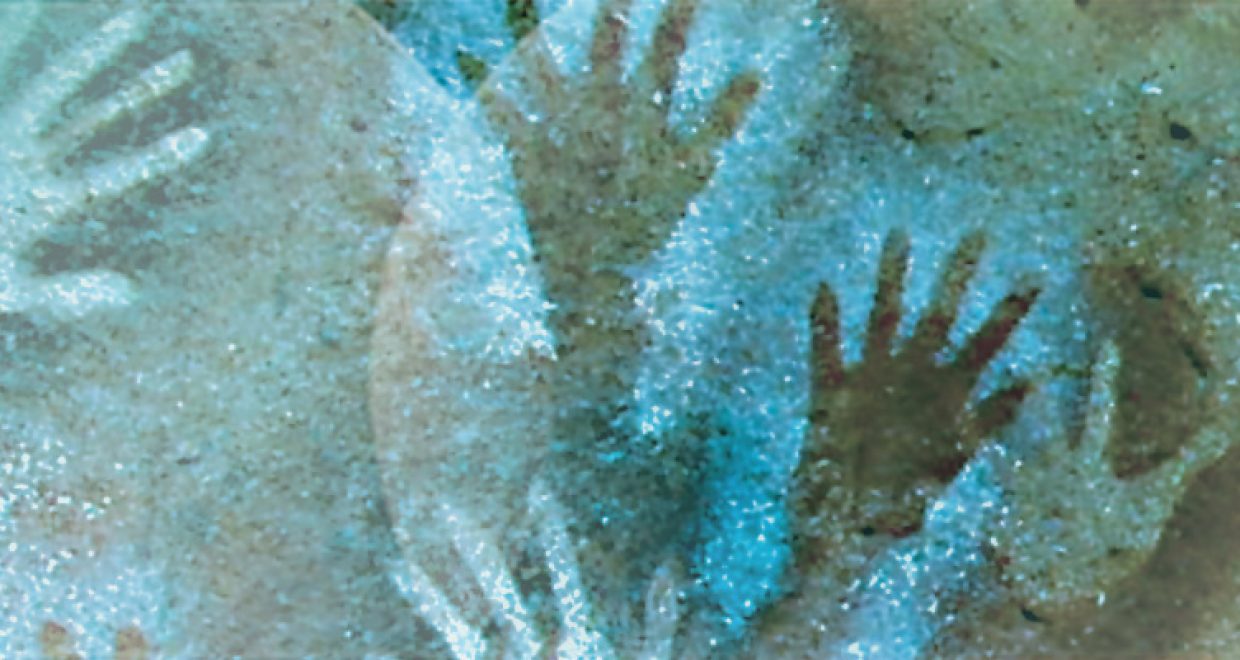Deep ancestry of collapsing networks of nomadic hunter-gatherers in Borneo
Steve Lansing is an American anthropologist and complexity scientist, currently a Fellow at the Center for Advanced Study in the Behavioral Sciences at Stanford University. His most recent book is Islands of Order (with Murray Cox), Princeton University Press.
During a survey of resettled communities of hunter-gatherers in Borneo in 2018, geneticist Pradiptajati Kusuma and myself were introduced to a group of still-nomadic hunter-gatherers who call themselves Punan Batu (Cave Punan). Along with Guy Jacobs, we made repeated visits to their rock shelters over several years and supplemented our ethnographic observations with three types of information: mobility tracking with portable GPS and accelerometers, population genetics and languages. All three clearly indicate that they are a population of mobile foragers with a unique ancestral signature. They willingly complied with our requests to wear GPS units because they are in a crisis caused by the ongoing incursions into their ancestral forests by logging and palm oil plantations. In 2020, we persuaded the Leakey Foundation and the Indonesian affiliate of the Nature Conservancy, Konservasi Alam Nusantara (KAN), to collaborate in support of a “Survival Plan” for the Punan Batu. The plan’s immediate goal is to secure their recognition as a customary law community entitled to claim ancestral rights to natural resources in a specific locality. According to Indonesian law, to meet this requirement the community must consist of “people who for generations have lived in a certain geographical area in the Republic of Indonesia because of ties to ancestral natural resources and have traditional governance institutions and an indigenous legal structure in their traditional territory” (Law 39/2014 on Plantation Development, article 1(6)). The paper provides scientific support for this claim. By design, the paper is not framed as advocacy for the Punan or forest conservation. Instead, it is the first comprehensive modern cultural-genetic-linguistic study of any Borneo hunter-gatherers. In 2020, we were accompanied by paleoarchaeologist Steve Kuhn and a writer for the National Geographic, Brendan Borell, on a visit to Punan Batu rock shelters.
Because the Punan Batu travel continuously in very small groups, the development of the Survival Plan is challenging. For nearly twenty years, KAN has assisted a resettled Punan community called Long Duhun, not far from the forests of the Punan Batu. When we told the people of Long Duhun about the Punan Batu, they suggested that KAN facilitate a visit to their village, to meet face-to-face and learn about the kinds of support KAN has provided, such as a school and medical clinic. However, before this invitation could be conveyed to the Punan Batu, the spread of COVID-19 brought travel to a halt. As soon as it becomes possible, this invitation will be renewed.
Visits between groups are an ancient tradition among the Punan, facilitated by message sticks. When a group decides it is time to move, they customarily place a stick in the ground whose length and direction indicate where they plan to go. Every adult has a symbol for their name that can be used to identify them on a message stick. The sticks are also used to transmit more complex signals. For example, a rolled-up leaf placed in a cleft signifies an urgent request to bring food to the sender’s group. There is also a stick symbol for the presence of disease, used to warn others of the risk of contagion. More symbols point to fruiting trees, and function as invitations. Groups usually move every 8-9 days, either when local resources have dwindled or on extended visiting or foraging trips. Message sticks provide a way to share vital information for planning these moves, including requests for help, directions to foraging opportunities and warnings of danger, such as disease, to all who can read the signs (the Punan assert that they are neither noticed nor understood by nonPunan). In this way, ongoing communication by message sticks defines the Cave Punan community, sustaining a social network which recognizes every individual. Apart from the Punan Batu, the knowledge and use of message sticks now appears to be rapidly declining in resettled Punan and Penan communities across Borneo. To our knowledge, message sticks are no longer in active use except among the Punan Batu.
Message stick indicating that a woman named “Star” went the direction indicated:
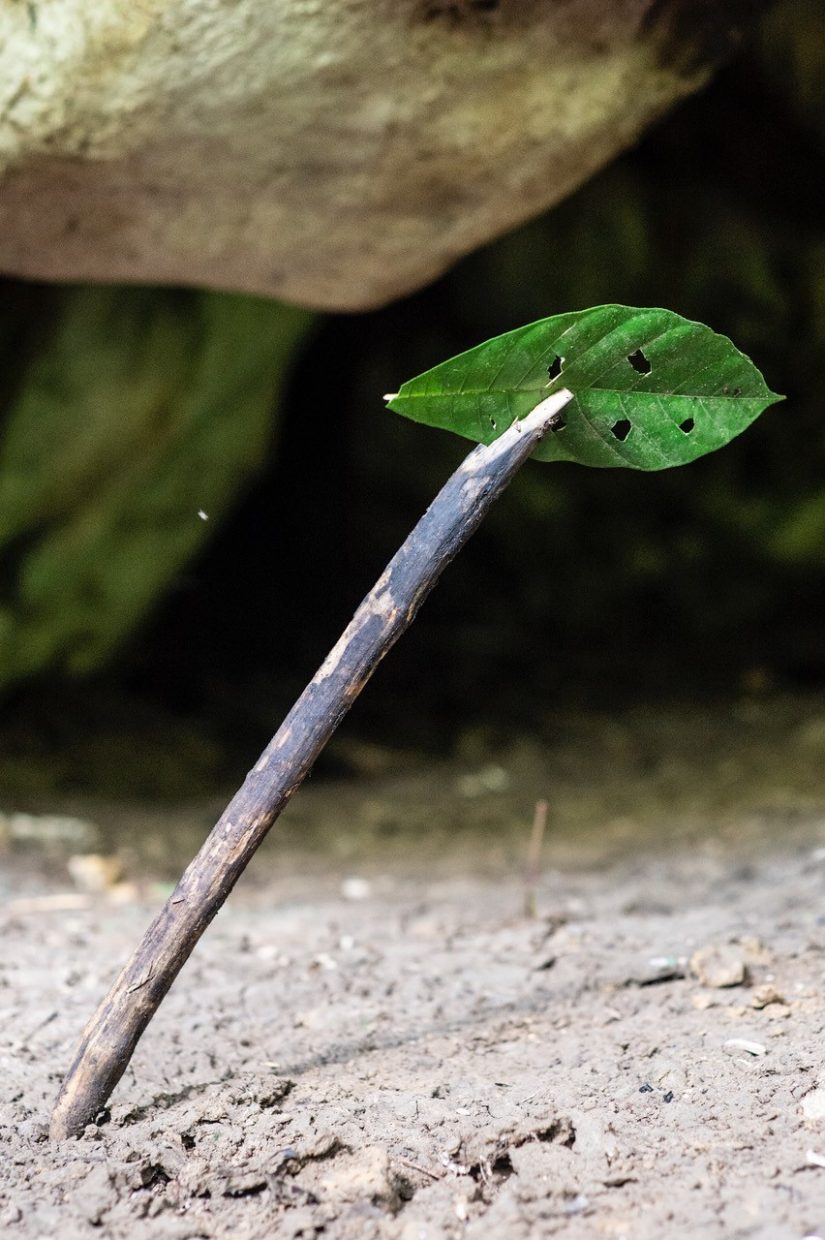
Cave Punan hunting:
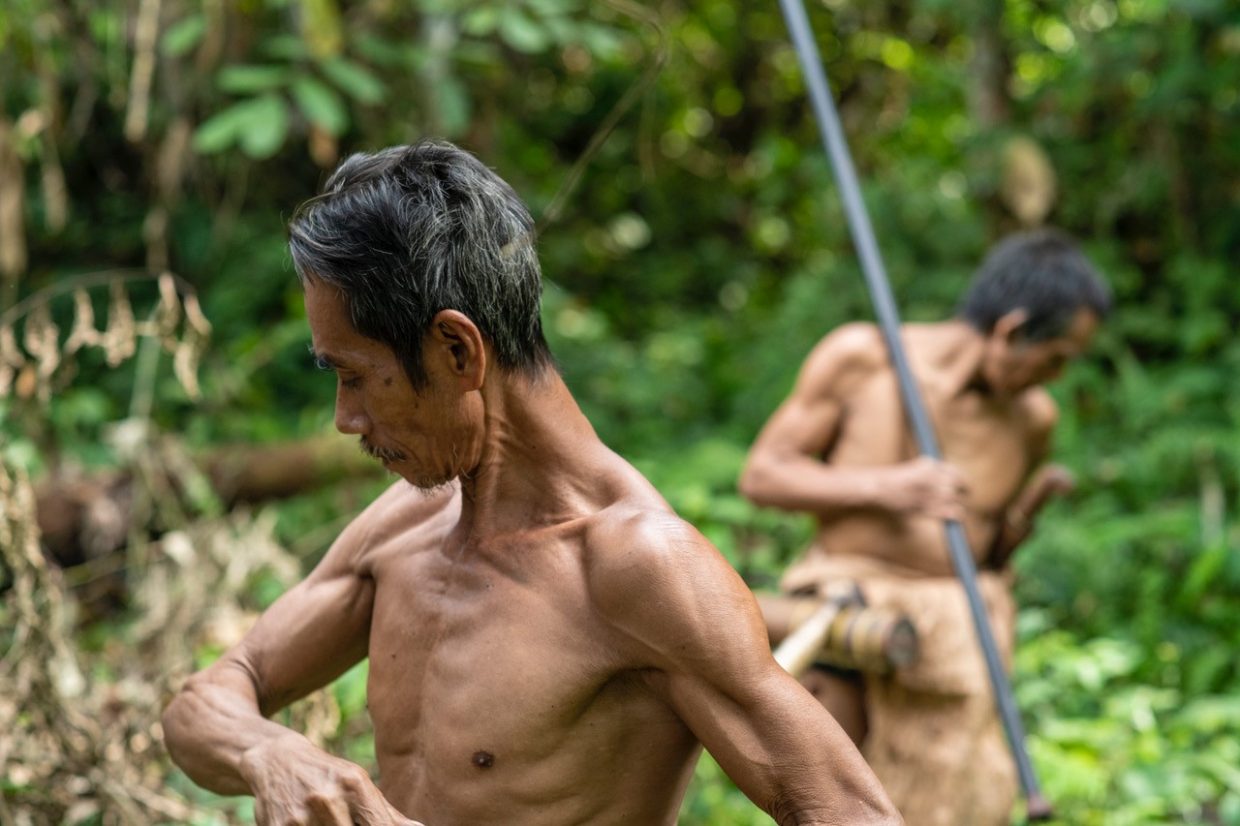
Dr Pradiptajati Kusuma at a rock shelter:
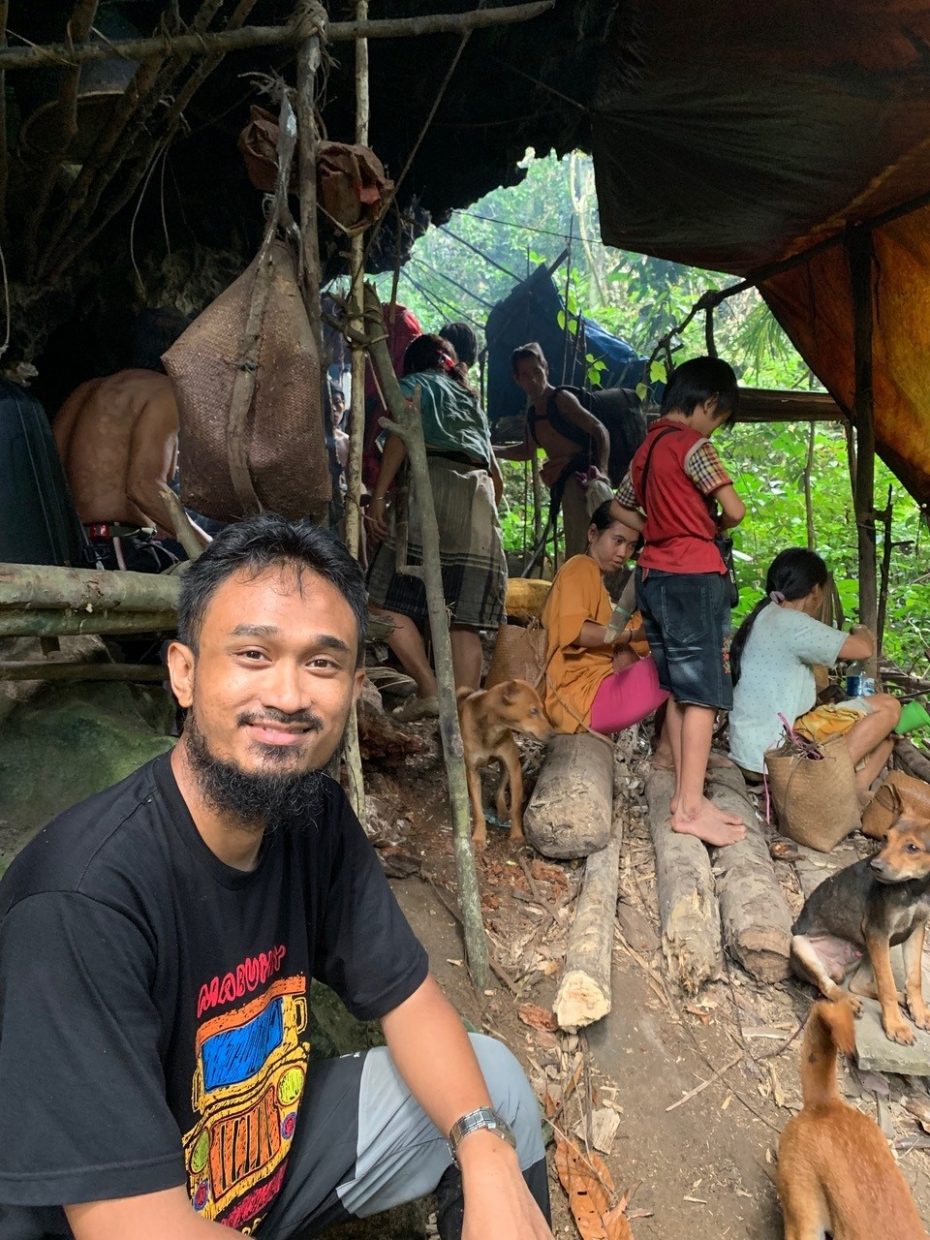
Dr Steve Kuhn at a rock shelter:
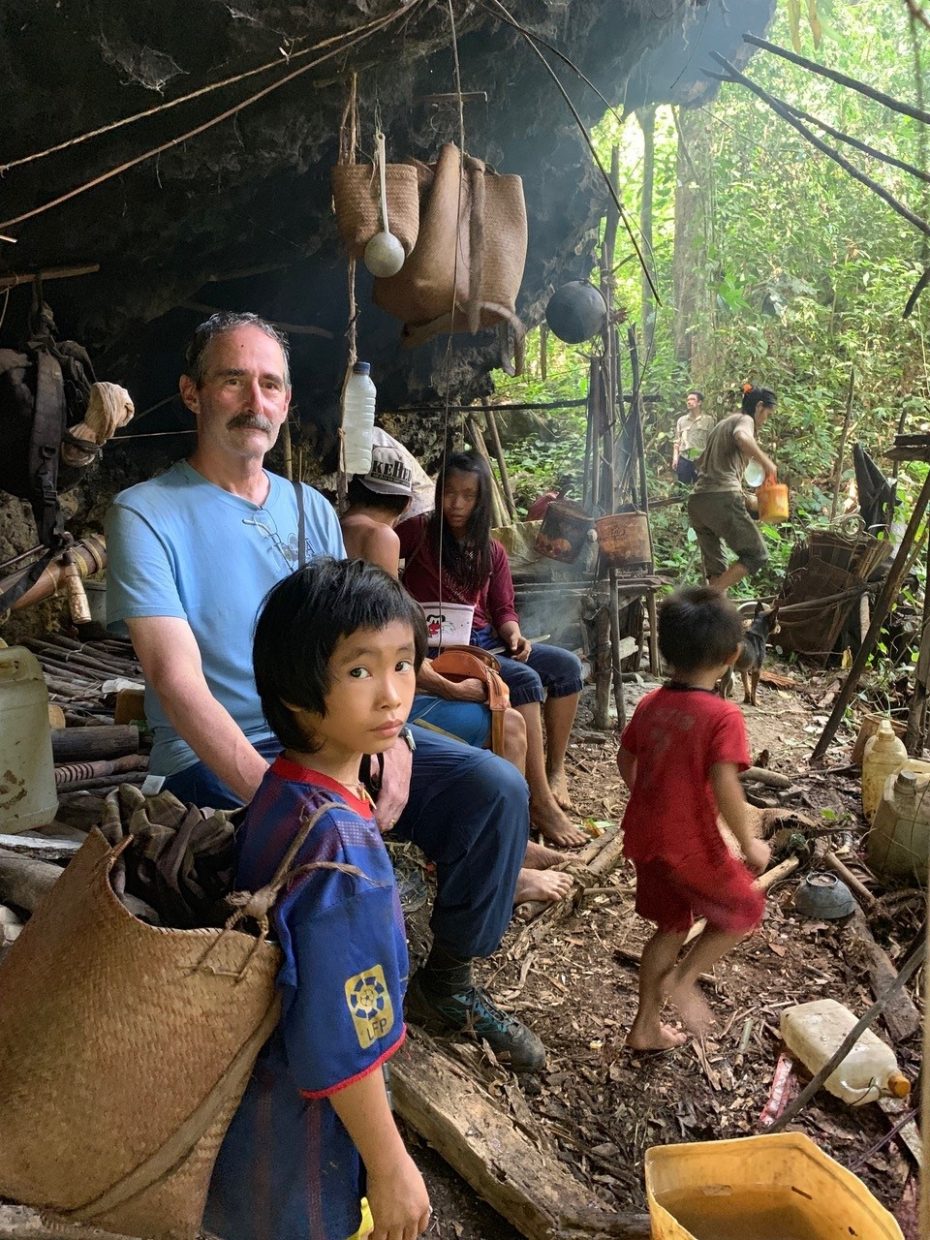
Entrance to a cave:
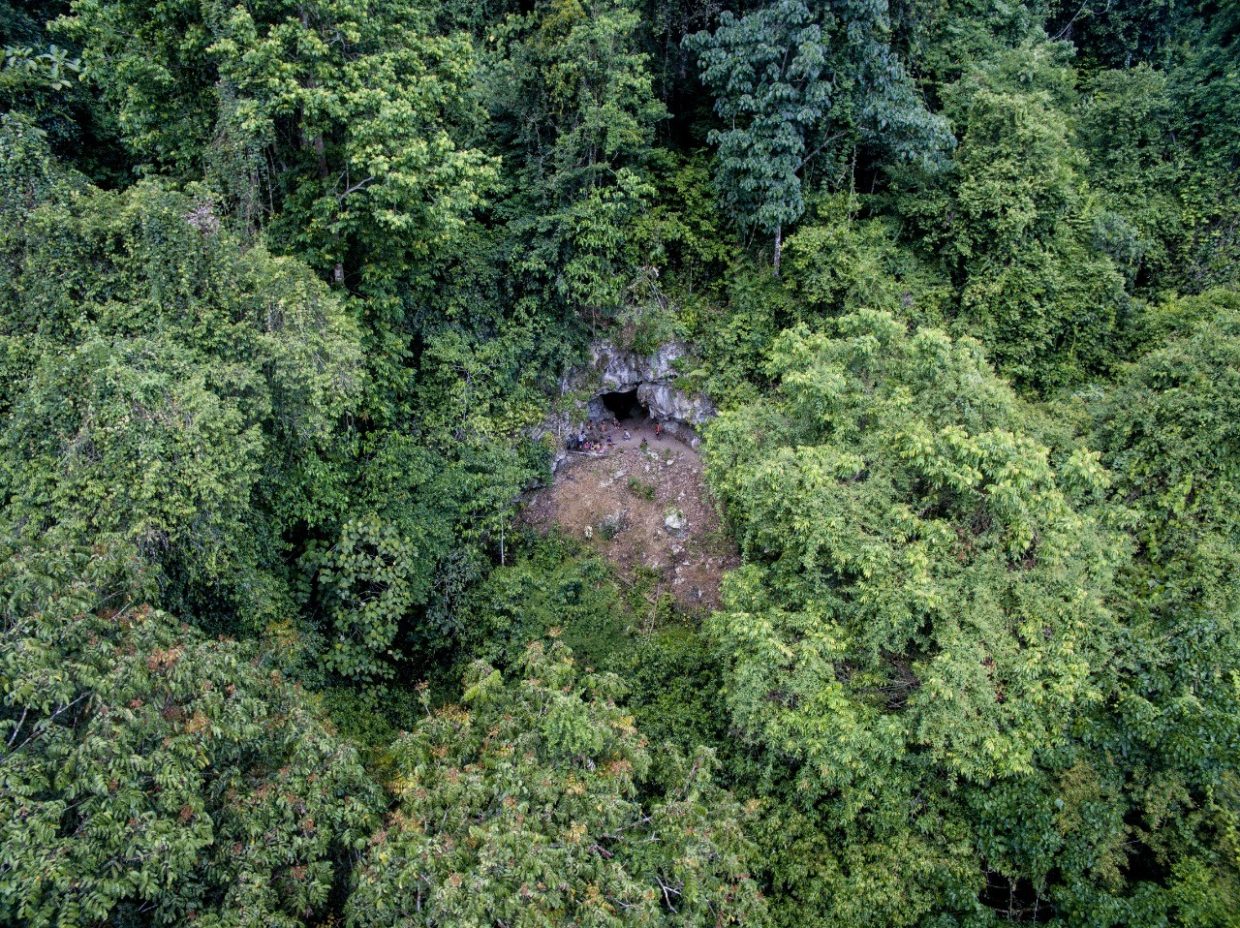
Original publication:
Steve Lansing
Deep ancestry of collapsing networks of nomadic hunter-gatherers in Borneo
Evolutionary Human Sciences, 21 February 2022, DOI:10.1017/ehs.2022.3
